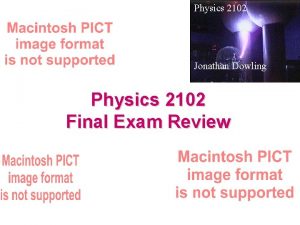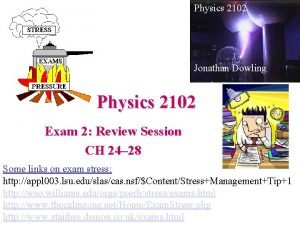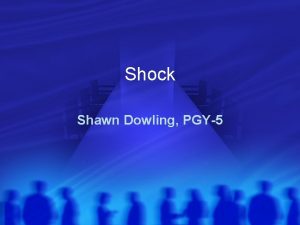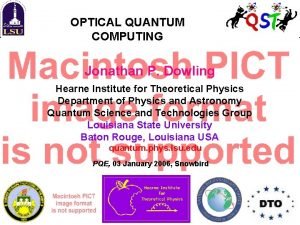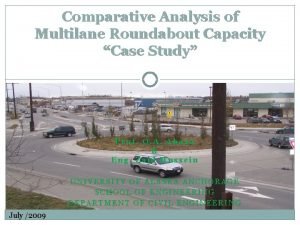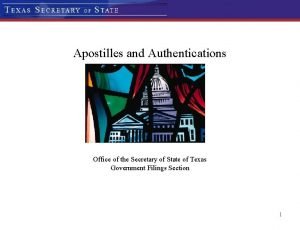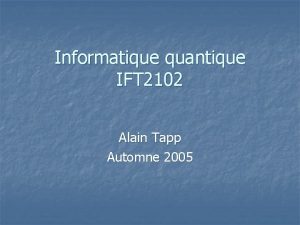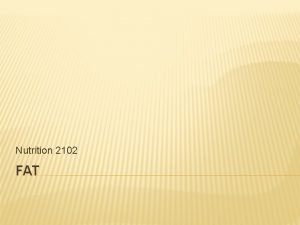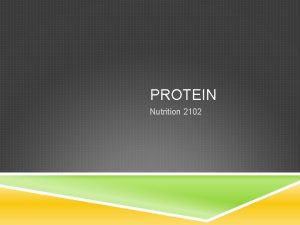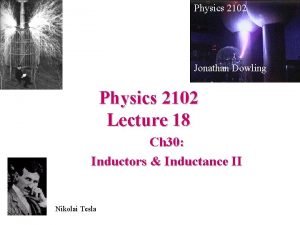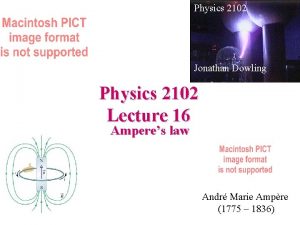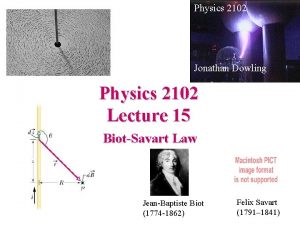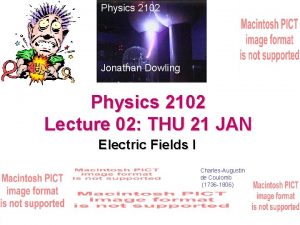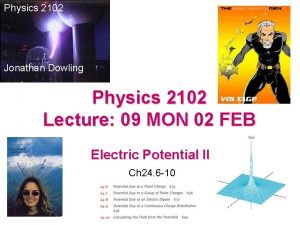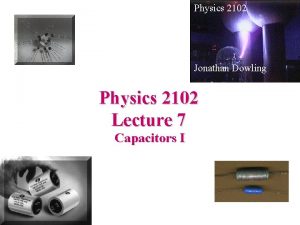Physics 2102 Jonathan Dowling Physics 2102 Lecture 02












- Slides: 12

Physics 2102 Jonathan Dowling Physics 2102 Lecture 02: WED 14 JAN Electric Charge II Version: 10/30/2020 Charles-Augustin de Coulomb (1736 -1806)

Electric Charges in Solids • In Macroscopic Solids, Nuclei Often Arrange Themselves Into a Stiff Regular Pattern Called a “Lattice”. • Electrons Move Around This Lattice. Depending on How They Move the Solid Can Be Classified by Its “Electrical Properties” As an Insulator or a Conductor.

Charges in Solids • In a Conductor, Electrons Move Around Freely, Forming a “Sea” of Electrons. This Is Why Metals Conduct Electricity. • Charges Can Be “Induced” (Moved Around) in Conductors. Blue Background = Mobile Electrons Red Circles = Static Positive Charge (Nuclei) + -

Insulating Solids • In an Insulator, Each Electron Cloud Is Tightly Bound to the Protons in a Nucleus. Wood, Glass, Rubber. • Note That the Electrons Are Not Free to Move Throughout the Lattice, but the Electron Cloud Can “Distort” Locally. + –

How to Charge an Object • An Object Can Be Given Some “Excess” Charge: Giving Electrons to It (We Give It Negative Charge) or Taking Electrons Away (We “Give” It Positive Charge). • How Do We Do Charge an Object? Usually, Moving Charges From One Surface to Another by Adhesion (Helped by Friction), or by Contact With Other Charged Objects. • If a Conductor, the Whole Electron Sea Redistributes Itself. • If an Insulator, the Electrons Stay Where They Are Put.

Electroscope http: //www. physicsclassroom. com/mmedia/estatics/esn. html

Van der Graaf Generator http: //science. howstuffworks. com/vdg 2. htm http: //www. amasci. com/emotor/vdg. html


Conservation of Charge Total Amount of Charge in an Isolated System Is Fixed (“Conserved”) Example: 2 Identical Metal Spheres Have Charges +1 C and – 2 C. You connect these together with a metal wire; what is the final charge distribution? +1 C -2 C ? ? – 1/2 C

Quantization of Charge • Charge is always found in INTEGER multiples of the charge on an electron/proton. • Unit of charge: Coulomb (C) in SI units • Electron charge = –e = -1. 6 x 10– 19 Coulombs • Proton charge = +1. 6 x 10– 19 Coulombs • One cannot ISOLATE FRACTIONAL CHARGE (e. g. – 1/2 e, +1/3 e, etc. )

Ch. 21: Summary • Electric Charges Come With Two Signs: Positive and Negative. • Like Charges Repel, Opposite Charges Attract, With a Magnitude Calculated From Coulomb’s Law: F=kq 1 q 2/r 2 • Atoms Have a Positive Nucleus and a Negative “Cloud”. • Electron Clouds Can Combine and Flow Freely in Conductors; Are Stuck to the Nucleus in Insulators. • We Can Charge Objects by Transferring Charge, or by Induction. • Electrical Charge Is Conserved, and Quantized.

